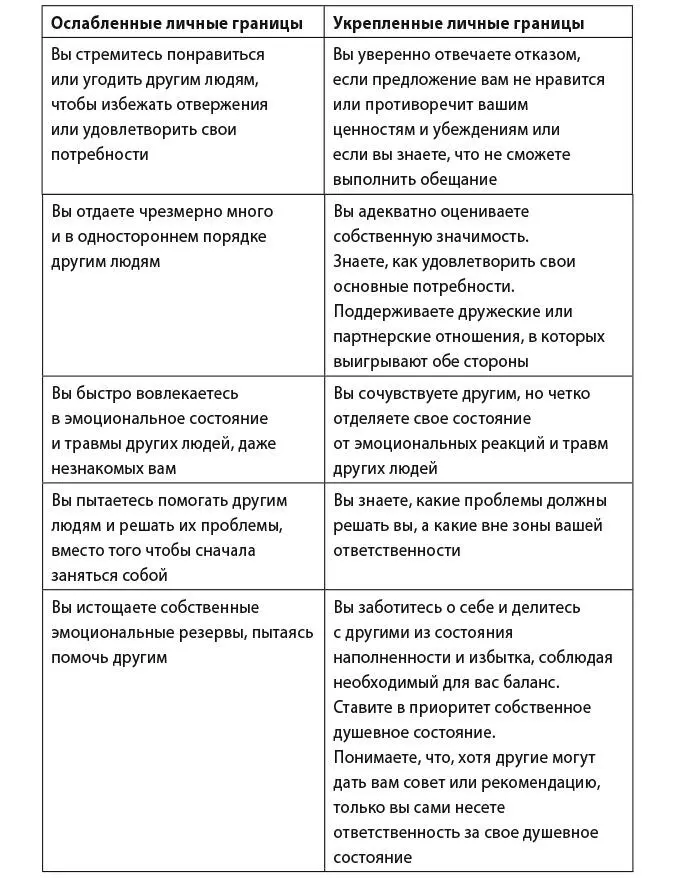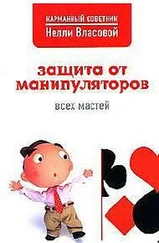
Acevedo, B. P., E. N. Aron, A. Aron, M. Sangster, N. Collins, and L. L. Brown. 2014. “The Highly Sensitive Brain: An fMRI Study of Sensory Processing Sensitivity and Response to Others’ Emotions.” Brain and Behavior 4(4): 580–594.
APA (American Psychiatric Association). 2013. Diagnostic and Statistical Manual of Mental Disorders. 5th ed. Arlington, VA: American Psychiatric Publishing.
Archer, D. 2017. “The Danger of Manipulative Love-Bombing in a Relationship.” Psychology Today, March 6. Accessed January 26, 2019. https://www.psychologytoday.com/us/blog/reading-between-the-headlines/201703/the-danger-manipulative-love-bombing-in-relationship.
Aron, A., E. Melinat, E. N. Aron, R. D. Vallone, and R. J. Bator. 1997. “The Experimental Generation of Interpersonal Closeness: A Procedure and Some Preliminary Findings.” Personality and Social Psychology Bulletin 23(4): 363–377.
Aron, E. 2016. The Highly Sensitive Person: How to Thrive When the World Overwhelms You. New York: Harmony Books.
Bartels A., and S. Zeki. 2000. “The Neural Basis of Romantic Love.” NeuroReport 11(17): 3829–3834.
Baumeister, R. F., E. Bratslavsky, C. Finkenauer, and K. D. Vohs. 2001. “Bad Is Stronger Than Good.” Review of General Psychology 5(4): 323–370.
Baumgartner, T., M. Heinrichs, A. Vonlanthen, U. Fischbacher, and E. Fehr. 2008. “Oxytocin Shapes the Neural Circuitry of Trust and Trust Adaptation in Humans.” Neuron 58(4): 639–650.
Begg, I. M., A. Anas, and S. Farinacci. 1992. “Dissociation of Processes in Belief: Source Recollection, Statement Familiarity, and the Illusion of Truth.” Journal of Experimental Psychology: General 121(4): 446–458.
Bergland, C. 2013. “Cortisol: Why the ‘Stress Hormone’ Is Public Enemy No. 1.” Psychology Today, January 22. https://www.psychologytoday.com/blog/the-athletes-way/201301/cortisol-why-the-stress-hormone-is-public-enemy-no-1.
Berk, L. S., S. A. Tan, W. F. Fry, B. K. Napier, J. W. Lee, R. W. Hubbard, J. E. Lewis, and W. C. Eby. 1989. “Neuroendocrine and Stress Hormone Changes During Mirthful Laughter.” The American Journal of the Medical Sciences , 298(6): 390–396.
Berman, M. G., J. Jonides, and S. Kaplan. 2008. “The Cognitive Benefits of Interacting with Nature.” Psychological Science 19: 1207–1212.
Bonchay, B. 2017. “Narcissistic Abuse Affects Over 158 Million People in the U.S.” PyschCentral.com, May 24. Accessed October 12, 2018. https://psychcentral.com/lib/narcissistic-abuse-affects-over-158-million-people-in-the-u-s.
Bovenizer, S. 2017. “The Limbic System.” Accessed July 1, 2019. https://suebovenizer.com/the-limbic-system.
Bowen, S., N. Chawla, S. E. Collins, K. Witkiewitz, S. Hsu, J. Grow, S. Clifasefi et al. 2009. “Mindfulness-Based Relapse Prevention for Substance Use Disorders: A Pilot Efficacy Trial.” Substance Abuse 30(4): 295–305.
Brach, T. 2020. Radical Compassion: Learning to Love Yourself and Your World with the Practice of RAIN. London: Rider Books.
Bradshaw, J. 1990. Homecoming: Reclaiming and Championing Your Inner Child. London: Piatkus.
Brummelman, E., S. Thomaes, S. A. Nelemans, B. O. Castro, G. Overbeek, and B. J. Bushman. 2015. “Origins of Narcissism in Children.” Proceedings of the National Academy of Sciences 112(12): 3659–3662.
Buttafuoco, M. J., and J. McCarron, J. 2009. Getting It Through My Thick Skull: Why I Stayed, What I Learned, and What Millions of People Involved with Sociopaths Need to Know. Deerfield Beach, FL: Health Communications.
Caddick, N., and B. Smith. 2017. “Combat Surfers: A Narrative Study of Veterans, Surfing, and War Trauma.” Movimento 23(1): 35.
Carek, P. J., S. E. Laibstain, and S. M. Carek. 2011. “Exercise for the Treatment of Depression and Anxiety.” International Journal of Psychiatry in Medicine 41(1): 15–28.
Carlson B., P. A. Palmieri, N. P. Field, C. J, Dalenberg, K. S. Macia, K. S., and D. A. Spain. 2016. “Contributions of Risk and Protective Factors to Prediction of Psychological Symptoms After Traumatic Experiences.” Comprehensive Psychiatry , 69: 106–115.
Carnell, S. 2012. “Bad Boys, Bad Brains.” Psychology Today, May 14. https://www.psychologytoday.com/blog/bad-appetite/201205/bad-boys-bad-brains.
Carnes, P. P. 2015. Betrayal Bond: Breaking Free of Exploitive Relationships.
Deerfield Beach, FL: Health Communications.
Carter, S. B. 2012. “Emotions Are Contagious – Choose Your Company Wisely.” Psychology Today, October 20. Accessed October 12, 2018. https://www.psychologytoday.com/us/blog/high-octane-women/201210/emotions-are-contagious-choose-your-company-wisely.
Carver, J. 2014. “Stockholm Syndrome: The Psychological Mystery of Loving an Abuser.” CounsellingResource.com, December 20.
Accessed February 28, 2019. https://counsellingresource.com/therapy/self-help/stockholm/2/.
Cascio, C. N., M. B. O’Donnell, F. J. Tinney, M. D. Lieberman, S. E. Taylor, V. J. Strecher, and E. B. Falk. 2015. “Self-Affirmation Activates Brain Systems Associated with Self-Related Processing and Reward and Is Reinforced by Future Orientation.” Social Cognitive and Affective Neuroscience 11(4): 621–629.
Clark, A., and A. T. Beck. 2011. Cognitive Therapy of Anxiety Disorders: Science and Practice. New York: Guilford Press.
Collinge, W., J. Kahn, and R. Soltysik. 2012. “Promoting Reintegration of National Guard Veterans and Their Partners Using a Self-Directed Program of Integrative Therapies: A Pilot Study.” Military Medicine 177(12): 1477–1485.
Craig, A. D. 2009. “How Do You Feel – Now? The Anterior Insula and Human Awareness.” Nature Reviews Neuroscience 10(1): 59–70.
Craig, G. 2011. The EFT Manual. Santa Rosa, CA: Energy Psychology Press. Creswell, J. D., J. M. Dutcher, W. M. Klein, P. R. Harris, and J. M. Levine. 2013. “Self-Affirmation Improves Problem-Solving Under Stress.” PLoS ONE 8(5).
De Becker, G. 2010. The Gift of Fear: Survival Signals That Protect Us from Violence. London: Bloomsbury.
Drexler, S. M., C. J. Merz, T. C. Hamacher-Dang, M. Tegenthoff, and O. T. Wolf. 2015. “Effects of Cortisol on Reconsolidation of Reactivated Fear Memories.” Neuropsychopharmacology 40(13): 3036–3043.
Durvasula, R. 2018. “Narcissist, Psychopath, or Sociopath: How to Spot the Differences.” Medcircle.com, August 8. Accessed October 9, 2018. https://www.youtube.com/watch?v=6dv8zJiggBs.
Dutton, D. G., and A. P. Aron. 1974. “Some Evidence for Heightened Sexual Attraction Under Conditions of High Anxiety.” Journal of Personality and Social Psychology 30(4): 510–517.
Elliott, S. 2009. Getting Past Your Breakup: How to Turn a Devastating Loss into the Best Thing That Ever Happened to You. Cambridge, MA: Da Capo Lifelong.
Felitti, V. J., R. F. Anda, D. Nordenberg, D. F. Williamson, A. M. Spitz, V. Edwards, M. P. Koss, and J. S. Marks. 1998. “Relationship of Child-hood Abuse and Household Dysfunction to Many of the Leading Causes of Death in Adults.” American Journal of Preventive Medicine 14(4): 245–258.
Ferster, C. B., and B. F. Skinner. 1957. Schedules of Reinforcement. New York: Appleton-Century-Crofts.
Fetzner, M. G., and G. J. Asmundson. 2014. “Aerobic Exercise Reduces Symptoms of Posttraumatic Stress Disorder: A Randomized Controlled Trial.” Cognitive Behaviour Therapy 44(4): 301–313.
Читать дальше
Конец ознакомительного отрывка
Купить книгу












